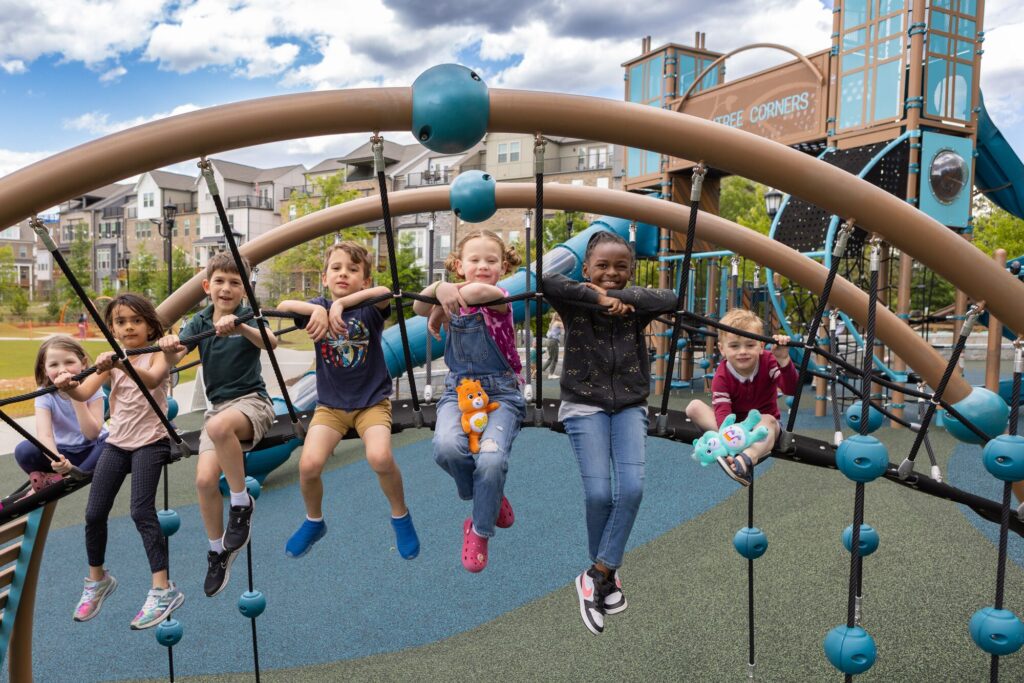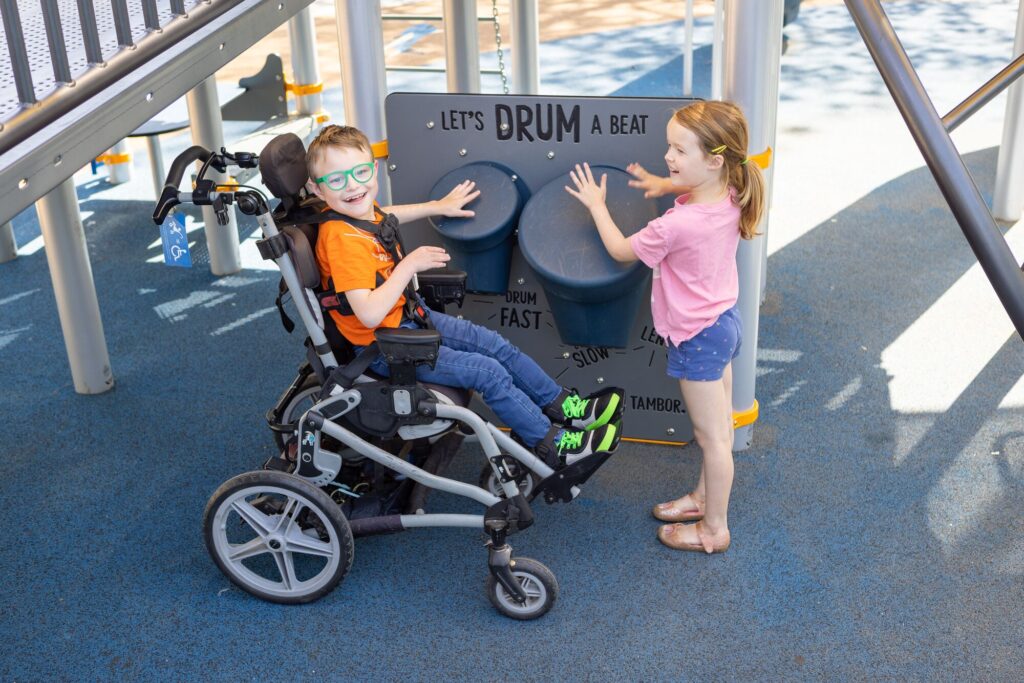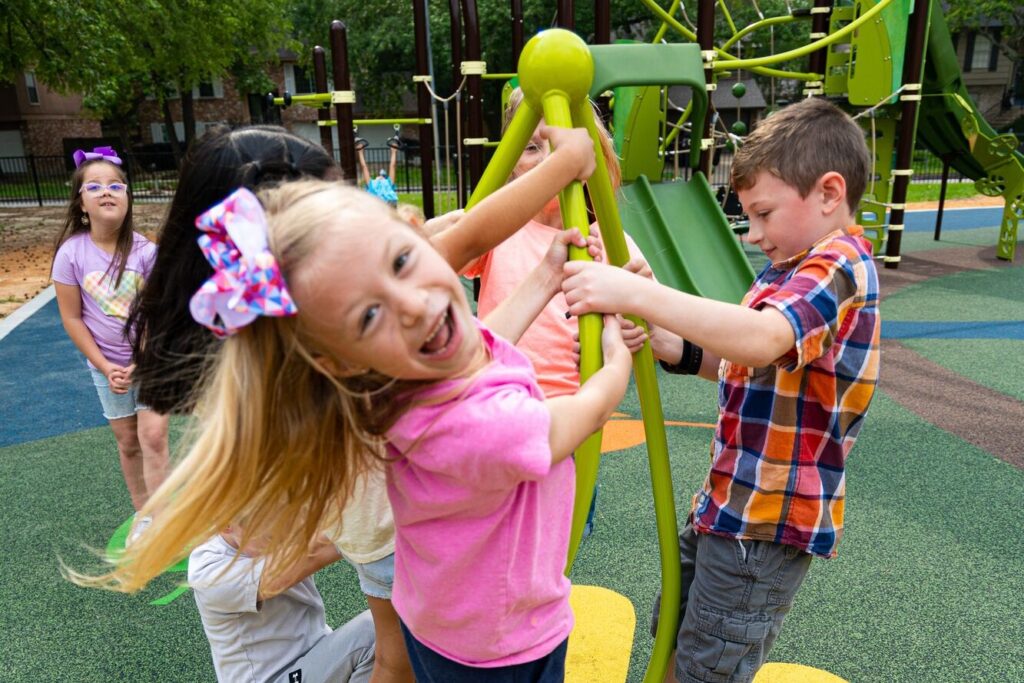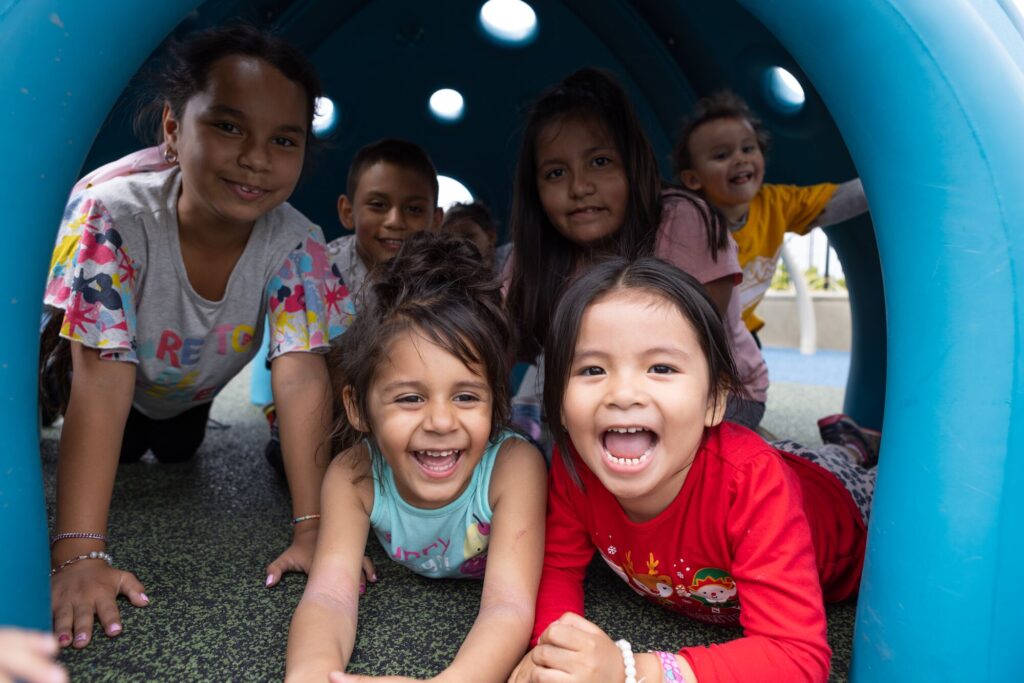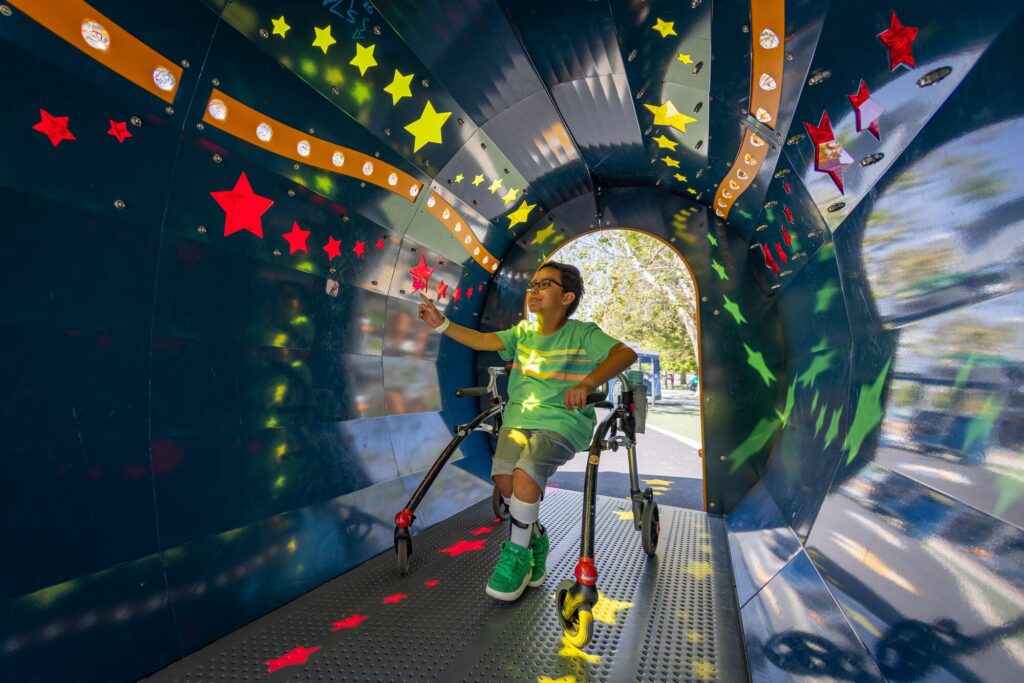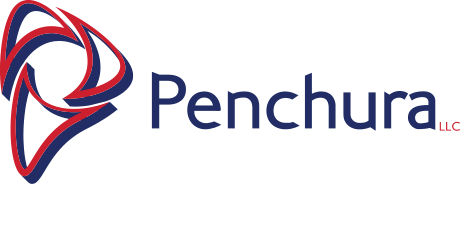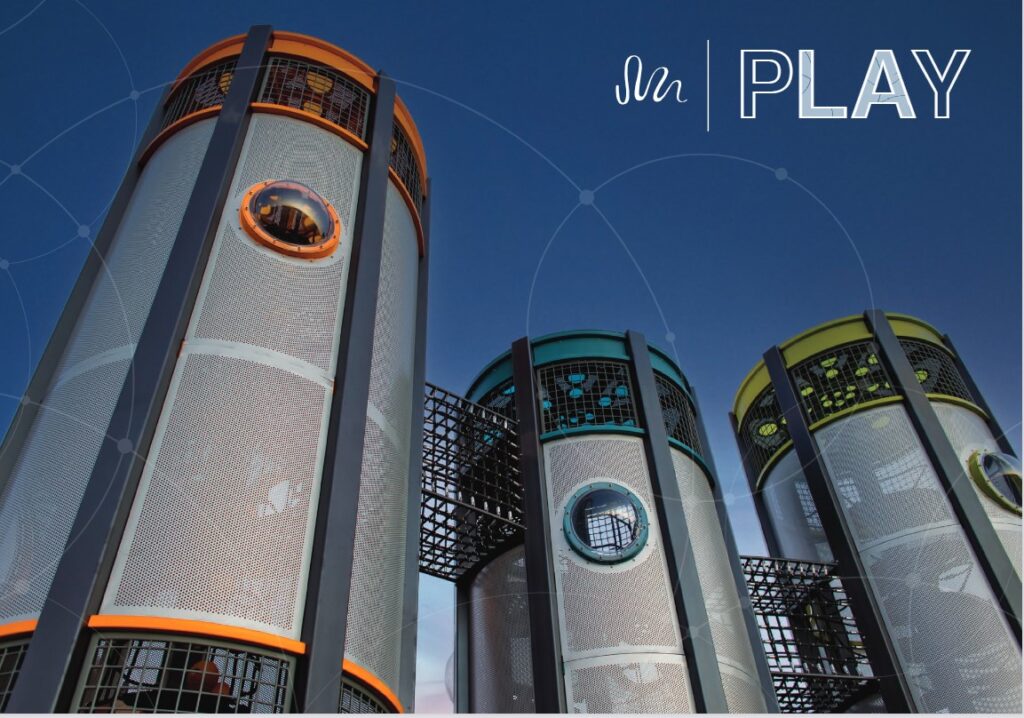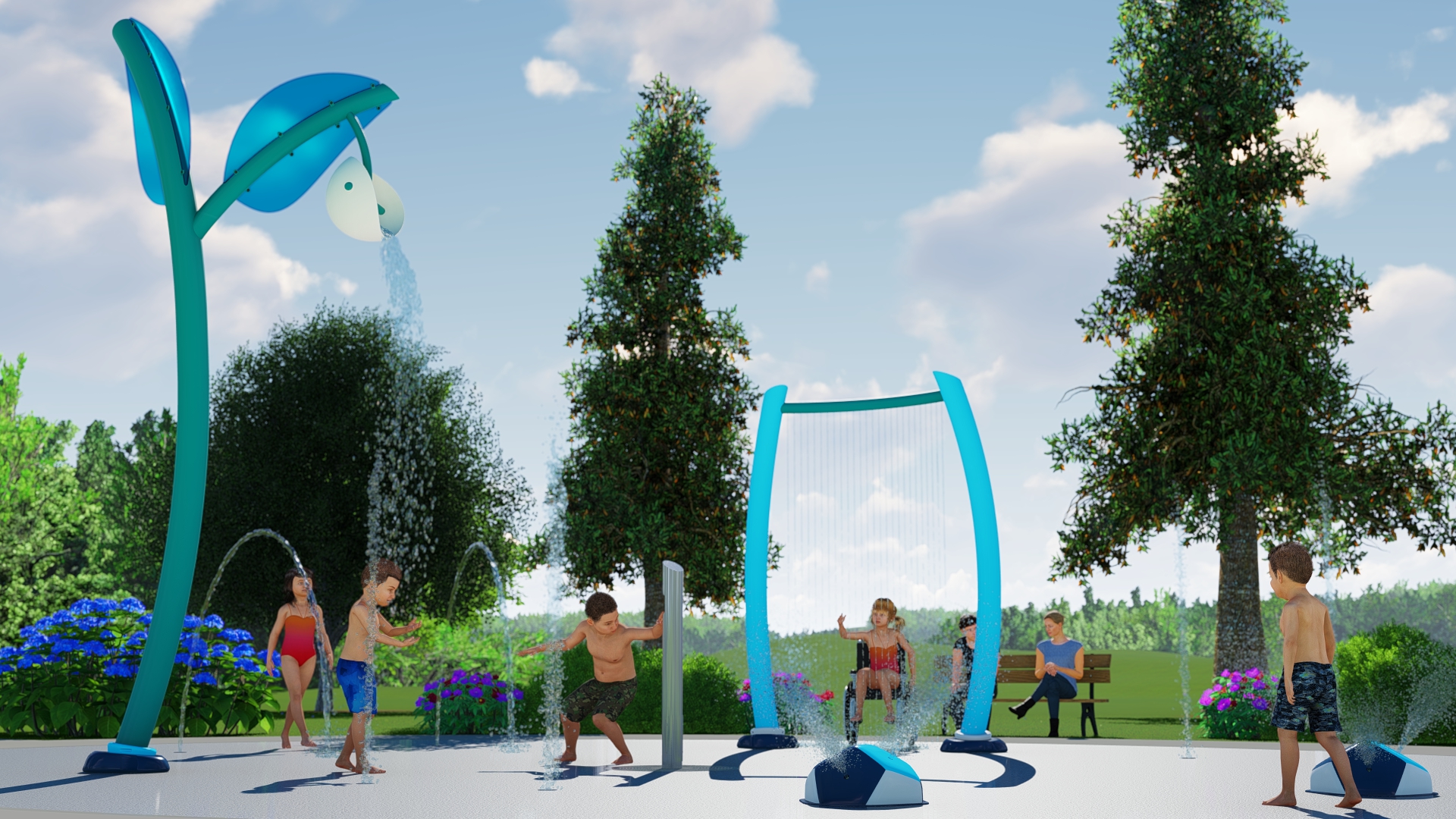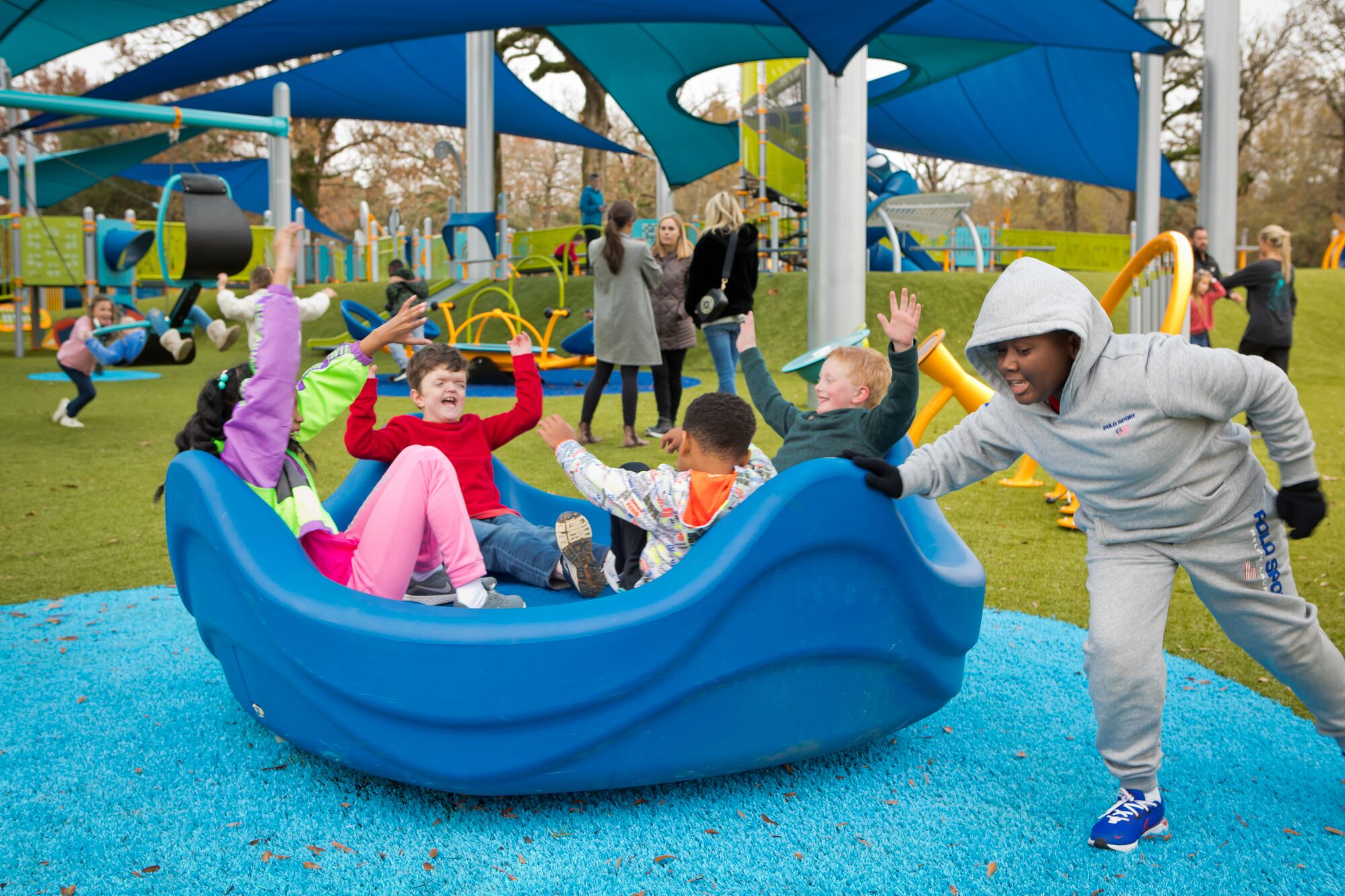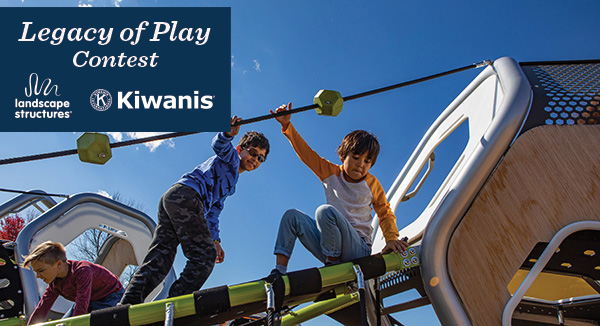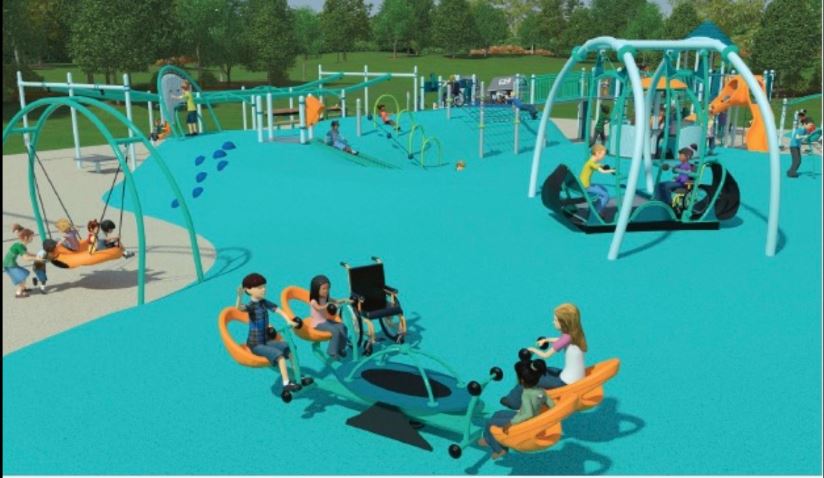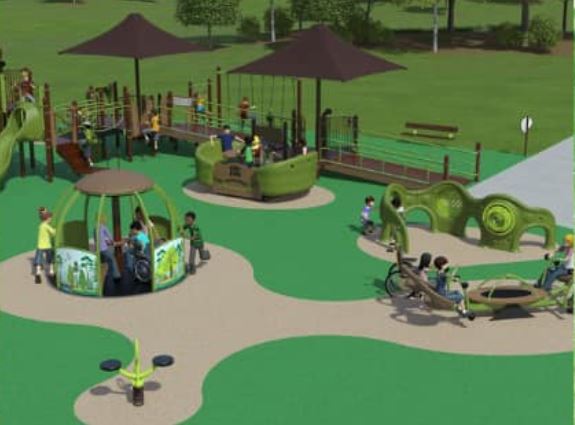Some playgrounds invite kids to climb. Others spark exploration. The Volo Aire™ playground tower does it all—at an awe-inspiring 26 feet in the air!
This three-story marvel isn’t just about height—it’s about movement, discovery, and play for all. Kids take on thrilling climbs, enjoy panoramic views and race down exhilarating slides. With its bold architectural presence, Volo Aire is a show-stopping centerpiece that redefines what a playground can be.
But what inspired this groundbreaking structure? According to Tory Roff, principal designer, the goal was to balance adventure with accessibility, design with community integration, and thrills with safety. Let’s take a closer look at the creative vision behind the Volo Aire playground tower.
“We Wanted a Playground Tower Emphasizing Height and Big Thrills.”
Towering 26 feet into the sky, Volo Aire delivers excitement that keeps kids coming back. But height alone isn’t enough—it needs to feel safe, too.

“Volo Aire’s open-weave LSI Flexx™ steel-reinforced net creates a sense of exposure, making kids assess their own comfort levels before proceeding further up,” explained Tory. “We’ve watched many attempt the climb. Sometimes they opted for a lower exit before finally conquering their fear and getting rewarded with a 20-foot vertical slide. This tower is perfect for children to push their limits and build courage—something few playgrounds are doing these days.”
With perforated panels and vertical slats, the structure is open enough to offer the perception of risk, giving kids heart-pounding views. At the same time, it’s carefully designed so parents and caregivers can maintain visual contact, ensuring both thrill and peace of mind.
“It’s More Than a Playground—It’s a Landmark.”
A playstructure this bold doesn’t just belong in a park—it helps define it. Volo Aire is more than a playground, it’s a sculptural beacon of fun that seamlessly blends into its surroundings.



“When we build at a larger scale like the Volo Aire, it is critical to develop a design language that harmonizes with both the landscape and the built environment,” Tory said. “Often playgrounds seem to get a visual pass with loud colors and lots of plastic, but we aimed to create a destination that communities can take pride in—one that becomes part of their identity.”
Its airy perforated panels, warm wood slats and an openness that invites light and movement, Volo Aire is sure to become a gathering place that enhances the community.
“Every Kid Deserves to Feel on Top of the World.”
Why should adventure be limited to a few? Volo Aire ensures that every child—of every ability—can experience the joy of climbing to the very top.
“Designing for height often unintentionally excludes those who can’t climb vertically. With Volo Aire, we challenged ourselves to make access to all portions of the playground a primary design criteria,” says Tory. “That’s why we designed an accessible, winding path made of our revolutionary LSI Flexx steel-reinforced net, allowing kids with a wide range of abilities to find a play experience that suites their needs.”
Volo Aire provides multiple routes to climb, explore and engage, ensuring that no child is left behind when it comes to play.
“Every Step Inside Should Feel Like a Discovery.”
The magic of Volo Aire doesn’t just come from its height or aesthetics—it’s in the way it feels when you step inside. This isn’t just a tall structure with a slide. It’s a multi-level play experience packed with movement, surprises and endless ways to explore.

“We wanted kids to have that ‘whoa’ moment when they step inside,” Tory shared. “Everywhere they turn, there’s something to engage with. Every square foot has been carefully programmed to offer movement, challenge and fun.”
From vertical climbs and lookout spots to interactive features and thrilling slides, Volo Aire ensures that every adventure feels new and exciting.
The Future of Play is Here
Volo Aire isn’t just a playground—it’s an experience. It’s about climbing higher, playing smarter and making every moment unforgettable.
See Volo Aire in action below, then explore this all-new playstructure at playlsi.com/volo-aire and experience play like never before.





























